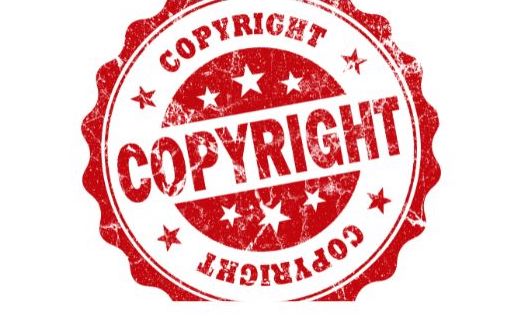
Web Design: The Legalities of Copying a Website Design
When it comes to copying a website design, you need to be aware of many legal rules and regulations. Copyright laws come into play, and you could find yourself in some serious trouble if you don't adhere to them. In this article, we will look at the legalities of copying a website design and how you can go about doing it without any problems.
Is It Possible to "Accidentally" Copy a Website Design?
One common misconception many people have is that copying a website design can be done "accidentally" without meaning. This can quite often as there aremore than a billion websites on the internet. Several color schemes, layouts, and even images have been used repetitively already, and although it may seem unusual, some web designers can run out of creative and unique options.
However, knowingly copying a website design with a patented design, templates, images, and other trademarked materials can put a designer in serious trouble. This is because there are copyright laws that govern even website design. Some designers resort to consulting an experienced legal counsel or an intellectual property lawyer who can help guide them through the process of protecting their work. This is to make sure that their works will not be freely copied illegally by another party.
Legalities of Copying a Website Design
US Copyright Law
When understanding the legalities of copying a website design, copyright law comes first to mind. Simply put, when you make something, you have copyright protection right away. However, registering with the U.S. Copyright Office gives you a civil remedy if someone steals your work. This is how you legally protect your creative work.
The Copyright Act of 1976 gives authors and artists the right to be the only ones to copy, share, and show their works. Websites are protected by this law because they have creative aspects like written content and images. There are also statutory damages that you can only get if you register your work and the infringement is particularly bad, like when a lot of people copy it, which hurts your reputation in the market.
Works for hire are the only exception to this rule. If you make a website for someone else and the contract says that they own the website's parts, you don't have copyright protection, and your client can use the website's content in any way they want. Some independent developers keep the copyright to their work, especially if they put a lot of work into it, like making their own photos, videos, or even blog posts.
Copyright Infringement in Web Design
Another one of the legalities of copying a website design is copyright infringement. Several different factors come into play when determining whether or not copying a website design constitutes copyright infringement. These include things like:
- The amount and quality of original content on your site versus someone else 's site
- Any copying of code or layout that might have been used in the original design
- Whether or not there was malicious intent behind copying someone else's work.
If you are found guilty of copyright infringement for copying a website design, you may be subject to legal penalties like fines and even jail time. However, the best course of action is to consult with an experienced lawyer who can help guide you through this process and ensure that your rights are protected. With the right legal counsel on your side, it will be much easier to navigate these tricky waters and avoid any potential problems down the road.
What Website Design Aspects Can You Copy Without Violating the Copyright Law?
Website Layout
Copying a website layout could be an infringement of copyright since website content can have copyrights, and a website's look can be a unique expression that can be protected. But if you're just talking about the look and layout of the site and not the content, it's probably just a generic way to organize information that is not a unique expression. This means that it wouldn't be protected by copyright law.
For example, websites often have drop-down menus, which wouldn't be an element that could be protected. The same can be said with the color of the hyperlinks and how they are arranged within the web pages. But if you take something truly original and use it, you should check to see if it has a copyright.
Fonts
Using a font on your website does not mean that you have copied the font unless it is a unique one. Most fonts can be used without any legal repercussions as long as you don't use the exact same version of them in your design.
So if there's a font that has been licensed to be used by multiple parties and websites, copying it for your own site would likely not constitute copyright infringement. However, copying an original or custom-made font could put you at risk of violating this law.
Color Scheme
Using the same color scheme as another website would not likely constitute copying their design or violating copyright law. You can use any colors you want on your website without running into legal issues, as long as you're not copying a specific combination that could be considered unique and original.
How to Avoid Copyright Infringement in Web Design
There are a few steps that you can take to avoid copying someone else's website design and thereby avoid copyright infringement. Some of these include:
- Conducting thorough research on the web design you want to copy and making sure that it isn't already trademarked or copyrighted
- Creating your own original content for your site rather than copying other people's work
- Hiring an experienced legal professional who can help guide you through this process and ensure that all your legal rights are protected
If you take these steps when copying a website design, you can avoid any potential legal complications down the road. With careful planning and attention to detail, copying another designer's work won't have to be an issue at all!
How to Create an Original Website Design That Won’t Get You in Trouble With the Law
One of the most important things to consider when designing a website is ensuring that it is original and doesn't contain copying or plagiarism. To do this, you should start by researching other websites in your industry or niche to get a sense of popular styles and designs.
For instance, if you're creating a website for a tech company, you might want to browse through websites like Apple, Google, and Microsoft to see what kinds of layouts and designs they use. Once you know what works in your industry or niche, you can start creating your own website design. This may involve using original images, videos, or code that reflect the style and aesthetic you are going for.
You should also make sure to create original content for your website rather than copying other people's work. This may involve hiring freelance designers and writers who can help develop unique ideas and concepts for your site. It is also important to work with an experienced web designer or developer who can help ensure that your site adheres to all legal requirements. This is key to avoiding any copyright infringement issues and keeping your website out of legal trouble.
Additionally, it's important to consult with an experienced legal professional who can offer guidance on copyright law related to web design and help protect your rights if necessary.
Overall, creating an original website design is all about planning, research, and creativity. With the right approach and a focus on quality content, you can create a site that stands out from the crowd without worrying about copying or plagiarism.
Tips for Finding Free Stock Images Without Infringing on Someone’s Copyright
If you want to find free stock images for your website without running the risk of copying someone else's work, here are a few steps you can take:
- Conduct thorough research to find high-quality, free stock images that are not subject to copyright restrictions.
- Look for websites or online databases that offer free stock images, such as Pexels, Unsplash, and Pixabay.
- Consider using open-source software or creative commons licenses that allow you to use the images without infringing on any copyrights.
- When in doubt about whether an image is subject to copyright restrictions, always err on the side of caution and avoid using it altogether. This will help protect you from legal liability if someone claims ownership over the image at a later date.
Conclusion
Whether we like it or not, copying a website design is something that happens regularly in our digital world today. So if you are planning to start your website, you must understand the legalities of copying a website design. It's important to be mindful of what aspects of a website design are protected by copyright law and which are fair game for copying. With a little bit of research and expert guidance, copying a website design can be a great way to get inspiration for your next project!
